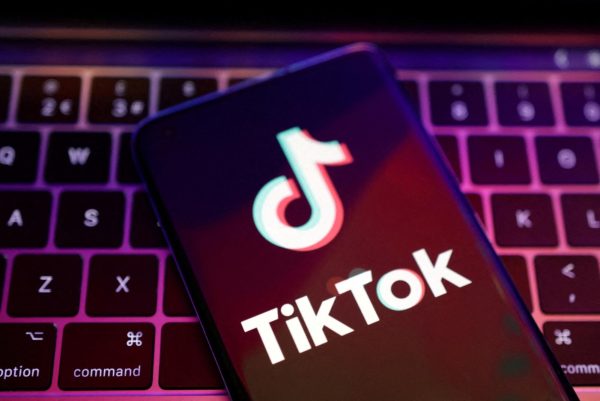COMMENTARY: Labeling Legitimate Media Outlets as “Fake News” Is Dangerously Ignorant
MSM. The utterance of those three letters in consecutive order causes unbridled gesticulations and irrepressible accusations among the detractors of mainstream media.
Such senseless blithering about the fallacy behind popular news networks is consistently countered by proponents of the reliability of media outlets. However, disregarding such substantial accusations would be irresponsible of our society.
If our news outlets are perpetrating the production of “fake news,” then it is the responsibility of the readers and viewers to hold those news outlets accountable. However, while many prominent members of our society have claimed that reputable news sources, such as CNN, FOX, and ABC deliver “fake news,” it is important to know the difference between the definition of fake news and society’s perception of fake news. Because if these accusations are true, if our news outlets are laden with corruption, this may just be the next crisis our society must endure.
Before anyone claims that mainstream media is fake, it is important to know what a mainstream media source is. Sources like CNN, FOX, ABC, MSNBC, BBC and Al Jazeera are all “mainstream.” Alternative sources, like Breitbart, InfoWars, and The Democratic Underground are not “mainstream,” nor is your cousin’s blog. Therefore, lumping the actions of “alternative media” and “mainstream media” into one group is irresponsible, considering their function is society is significantly different.
Mistrust of the media is a problem that can be very significant to a society. Without full trust in the media, a populous has greater odds of believing fallacious rumors from traditionally unreliable sources. If this lack of faith is well established, society needs to take the responsibility upon itself to check the media’s accuracy instead of complaining about their inaccuracies.
However, if a reader’s lack of faith is poorly placed, they are doing the news source and themselves a disservice by unfairly desecrating the reputation of the news outlet and contributing to the ignorance of society. Thus, it is important to have a line of demarcation when determining the truth behind a piece of news.
Interviews with Olympic Heights students, some who are members of The Torch, give perspective into what society considers “fake news.” Junior Razanne Saleh, and a Torch staff writer, concluded that “fake news” is “an article that is completely false and looking for attention.” It is a common aspect of “fake news” to look for attention. It is also critical to note that the capitalization of the media in a free-market economy forces media outlets to prioritize ad-revenue from supporters and pay-per-click viewership.
Yet, would an outlet go so far as to falsify information for ad-revenue? While it seems that this is a realistic possibility, it is too great of a risk for any outlet to undertake as if it is caught in a blatant lie, it will lose all support from its viewers, spelling the end of said news source. Sophomore Andrew Kaye, sports editor for The Torch, claimed that fake news is when a media outlet “takes an event and stretches the truth.”
Stretching the truth does not necessarily mean that a news outlet lied. Yes, it is journalistically unethical to stretch the truth, but if I were to claim that ice cream tastes good and strengthens one’s immune system when it reality it just tastes good, I have not lied, I have just merely stretched the truth. Therefore, this question must be posed to society: How much must the truth be stretched for it to become a lie?
Journalists, just like everyone else, are people. Journalists, just like everyone else, are inherently biased. Claiming that a slight political or social tilt on an article deems it fake would be criticizing human nature. Thus, it is quite possible for a journalist to make an honest mistake in reporting. It is also quite possible that a journalist may misinterpret his interviewee or some statistics he may gather.
Senior Cole Smith, The Torch’s Social Media Editor, claims that the difference between honest misreporting and “fake news” is that “fake news is the fault of the reporter while misreporting is the fault of the source.” Another OH student wishing to remain anonymous (not a Torch staff member), claims that the difference between misreporting and “fake news” is that “misreporting is genuinely making a mistake…while fake news is completely inaccurate…and deliberate.”
It is true that if a journalist is deliberately trying to spread misinformation for the progression of his agenda, that news is unequivocally fake. Yet, this concept also brings up an interesting quandary. How do we prove intent?
No journalist will admit to deliberately publishing fake news. Bias can be proven, but is it bias with intent? The misinterpretation of a statistic or quote can be proven, but is it misinterpreted intentionally? Thus, as with the previous predicament, how much bias or misinterpretation is allowed before news becomes fake? Evidently, proving intent for publishing fake news is something our society has yet to decode.
Yet, regardless of these factors, regardless of the murkiness of the demarcation, our society has become convinced that we are being consistently lied to by the media. Of those OH students interviewed for this column, only one claimed that mainstream media wasn’t intentionally publishing fake news. Whether that is because of “ad-revenue,” as junior Courtney Reiff posited, a general mistrust of media is pervading throughout our society.
However, when those interviewed were quizzed on their ability to determine this ever-present “fake news” epidemic, the average score was only 2/7 on this BBC “fake news” quiz: http://www.bbc.com/news/magazine-38005844. These troubling results can be derived from three scenarios. Citizens may just suck at determining the reliability of news, fake news may exist less than we anticipated, or the demarcating line that differentiates between “real” and “fake” news is subjective. The latter seems the most likely and the most troubling.
Without a solid line of demarcation that determines the quality of news, it is impossible for a person to conclude that news is “fake” or “real” without inherent bias in that assessment. That means those who judge the “fakeness” of news are just as guilty at letting bias influence them as the journalists they are lambasting.
Here is where this becomes messy. Society has determined that the media is untrustworthy because of inherent bias, yet the people making that assessment are inherently biased themselves. If one of these self-appointed judges of truth were to be labelled as frauds, they could simply disregard it and move on, as society would view it as an ad-hominem attack on an individual without factual basis.
Yet, if this “judge” were to declare that CNN, FOX, ABC, MSNBC or any mainstream media outlet published fake news, the whole foundation of that outlet’s existence would be in question. This is because a source of news is built upon the trust it has from its readership or viewership. If this accusation were to be proven true, good on that person for uncovering such journalistic filth. Yet, if this accusation were based on a disbelief that such an event happened or on the political or social aspects surrounding that event, then the whole media outlet is in jeopardy.
It is imperative we realize that the term “fake news” shouldn’t be tossed around like a verbal football, especially by those with influence. These words have legitimate consequences to the media outlet in question. Without proper boundaries and qualifications set for this label, every media outlet is at risk of being called “fake,” and every media outlet can be delegitimized just for the mention of it. The fact is that words have power, both a journalist’s and a citizen’s.










